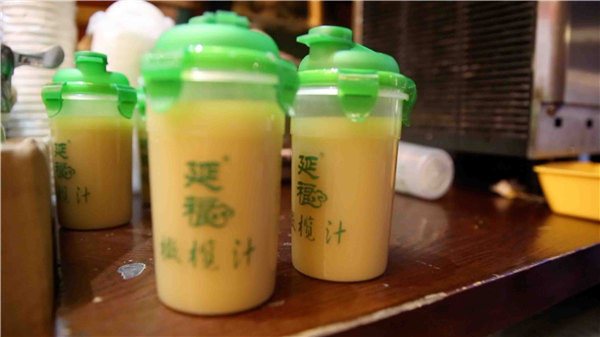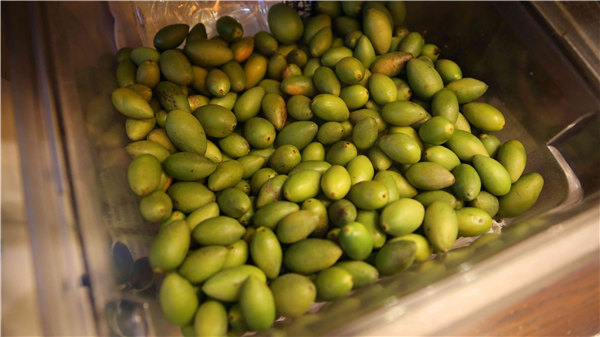Tastes like olive, but is it olive?

You've nibbled on olives as a snack, and dribbled olive oil on your salad, but have you ever tried olive juice?
Locals in East China's Fujian province swear by it. Passengers flying with the region's Xiamen Airlines can often be heard ordering it.
This is a specialty of Fuzhou, Fujian's provincial capital, known as ganlanzhi- literally, olive juice.
Grown here since the Tang Dynasty (AD 618-907), it was even approved as a trademark with geographic indication by China in 2010.
But put aside thoughts of oily green beverages. This olive juice is surprisingly refreshing, tasting more like carrot juice mixed with pineapple and other vegetables, with just a hint of an olive after-taste.

That has to do with the fact that the "Chinese olive", although it looks every bit like a fat green olive from Italy, actually grows on the Canarium album tree - from a completely different plant family found in tropical and subtropical climates, unlike olive trees, so fond of arid lands.
In 2012, Chinese olive trees covered some 107,000 hectares of Fujian province, with annual production of the fruit averaging about 5.5 million tons, according to the most recent figures from the Fujian Agriculture Bureau.
Dive into some of the shops in Fuzhou's old town and you will find case after case of dried "olives" to munch on: sweet, sour, salty, spiced and every combination in between.
But what locals and tourists come for first and foremost is the freshly-pressed olive juice, cloudy and light yellowish-green in color.
The Chinese believe it can do wonders for one's health. Not found elsewhere in China, it is also a reminder of the many regional differences in this country when it comes to food.
Related articles
-
 New-style tea beverages brew new consumption trend
New-style tea beverages brew new consumption trendMore
-
 Zisun tea: tribute tea in the Tang Dynasty
Zisun tea: tribute tea in the Tang DynastyMore
-
 Tea industry thriving in Hefeng County, C China
Tea industry thriving in Hefeng County, C ChinaMore
-
 Yanji in Yanbian Korean Autonomous Prefecture witnesses spark of coffee trend
Yanji in Yanbian Korean Autonomous Prefecture witnesses spark of coffee trendMore
-
 Steeped in history
Steeped in historyMore
-
 Taste of spring: cherry tea drink
Taste of spring: cherry tea drinkMore
